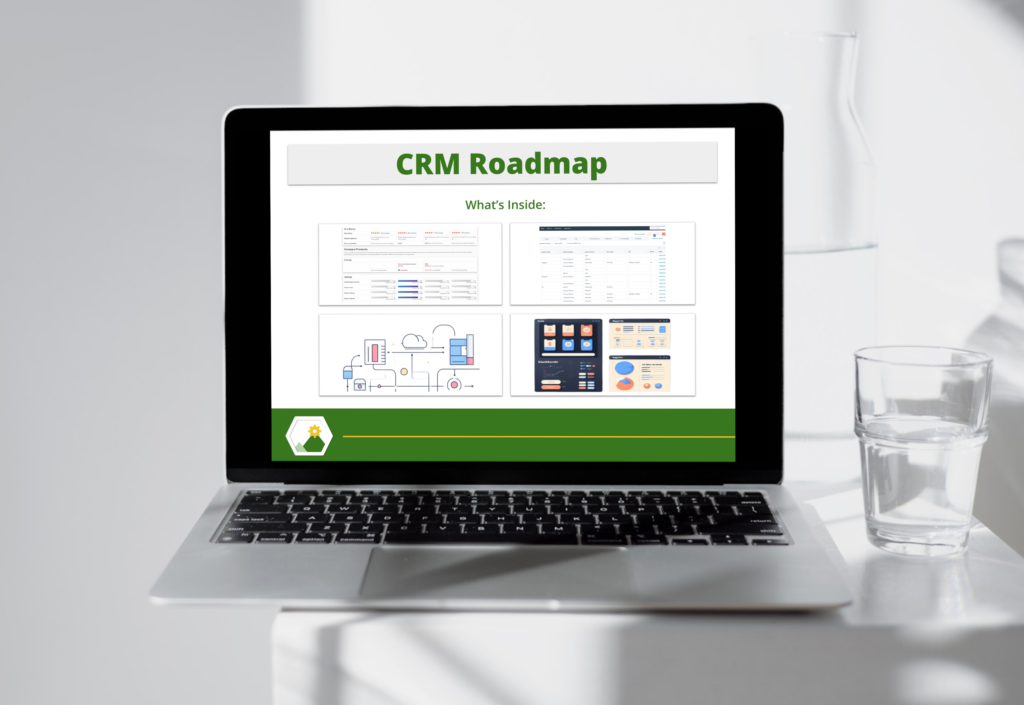In the fast paced environment of a growing business, it is important to find order within chaos wherever possible. When a product is launched, the executive team wants marketing and sales to spring into action quickly. A flurry of emails and phone calls ensues, meetings are scheduled and demos get booked. Feedback is shared and the sales cycles are in motion.
All this activity generates data, but that data only becomes useful if it is captured in the correct format to be analyzed, synthesized and re-applied to the business. This principle has given rise to the customer relationship management (CRM) industry, worth about $58 billion today and growing at over 13% CAGR through 2030. A number of players compete in this space, such as Salesforce, HubSpot, Zoho, Pipedrive, Freshworks and Monday.com. Larger technology conglomerates like Microsoft, Oracle and SAP also compete for a slice of this growing pie.

Adoption is strong, with roughly nine out of ten companies of 10+ employees using a CRM system. Utilization is the bigger concern; 91% of data in CRM systems is predicted to be incomplete, stale, or duplicated each year – leading to lack of trust in the data. This also translates into poor decision-making: only one in three marketers feels they can use their CRM data to make decisions.
Moving beyond CRM adoption and achieving nirvana in CRM utilization requires adherence to a few principles. Companies can start by elevating their concept of a CRM beyond a fancy rolodex or contact database – tracking customer interactions to manage their sales process. They can integrate their CRM system with other systems (such as marketing automation), knocking down data silos and speeding up intelligence gathering and execution. Ultimately, the entire system needs to be aligned to the entire sales process at every touch point, supporting unique stages of the sales process, such as lead generation, qualification, proposal, negotiation, and deal closing.
Key Questions To Use CRM For Sales Strategy
Without the right underlying data, your sales strategy relies entirely on intuition, leaving you exposed in a number of ways.
Without the right data, it becomes harder to understand the customers’ needs and wants, complicating the process of building relevant products and marketing or selling them effectively. Identifying and eliminating bottlenecks in the sales process becomes more complicated and inefficient. Sales forecasting becomes more reliant on guesswork, making it difficult to plan for the future and make informed decisions.
A founder or leader of a Seed stage company will often ask themselves certain questions to address this challenge:
- What are our sales goals?
- What are our biggest sales challenges?
- How do we manage our sales pipeline and forecast our sales?
- Who are our target customers, and what are their needs and pain points?
- What is our current sales process? How do we currently track and manage our opportunities?
- What data do we already have about our customers and prospects?
- What are our current customer satisfaction levels and customer retention rates?
- What features do we need in a CRM software solution?
- What is our budget for CRM, and how many users will need CRM access?
- What level of integration do we need with our existing systems?
Using CRM For Sales Strategy In Social Impact
To capture the right data and utilize it effectively in a CRM to advance your mission and social impact, consider the example of a nonprofit organization serving inner-city youth to acquire technology skills to prepare for life after high school. They cater to a wide array of stakeholders, including beneficiaries, donors, volunteers, and community stakeholders – making them an ideal use case to benefit from strategic use of a CRM.
Beneficiaries
The organization offers an array of tech skills training programs, mentorship opportunities, and internship placement solutions. Each of these has their own application and enrollment processes, requiring a centralized resource for data capture and analysis.
By creating detailed profiles for each program participant (including demographics, educational background, technical skills, interests, and goals), the organization can manage programs at scale while also delivering a personalized experience. The CRM can be used to monitor attendance, track progress, and record achievements, while identifying potential areas for intervention or additional support based on individual needs.
Donors
With detailed donor profiles in the CRM (including contact information, donation history, and areas of interest/engagement), the nonprofit can manage relationships at scale. They can analyze donor behavior to predict giving patterns or identify matching gift opportunities, and then automate donor engagement tasks based on those insights. The organization can also use this data to measure their own effectiveness in fundraising.
Volunteers
In this example, the skills training comes from experienced volunteers – managing this supply of expertise is critical to keeping the programs running. The CRM can be used to track volunteers’ contributions, hours spent, participation in activities, and skills shared. This helps to optimize the allocation of their expertise on hand, and can facilitate recruitment and onboarding to augment this supply. Like the other stakeholders, volunteers should be kept informed about program progress, success stories, and upcoming events – and the nonprofit should also make a concerted effort to gather and analyze volunteer feedback through surveys, questionnaires, or open-ended feedback forms. This helps to identify areas for improvement and address volunteer concerns, enhancing the overall volunteer experience.
Community Stakeholders
Part of how this nonprofit organization adds value for participants is by connecting them with relevant resources, such as job placement services, scholarships, or industry networking opportunities. These community relationships can take many forms, and by nature may not fit into predictable categories. A good CRM design allows for scalability in its stakeholder groups, continuously pushing the envelope on how the organization can enhance program delivery, foster meaningful relationships, and ultimately achieve its mission of empowering inner-city youth with tech skills for career opportunities.
Our Approach To Using CRM For Sales Strategy
As the centerpiece of your sales automation and enablement engine, your CRM is the link between strategy and execution. We follow a basic framework to make sure all the pieces are in alignment.
Strategy and process. The sales strategy needs to be clearly articulated, outlining all key customer segments and key performance indicators (KPIs). Paired with an effective internal process linked to your sales funnel, your sales team has the roadmap it needs to get to work.
Data requirements & CRM configuration. What sales and customer data do you need to collect? What don’t you need to collect? With answers to these questions, you can turn your attention to the methods of data collection, and how this data will be presented in the CRM to empower your sales organization. We’ll set up custom fields, automated workflows, and dashboards.
Integrations. The CRM becomes infinitely more useful when it is connected to other relevant business systems, such as back-end accounting, contract management, marketing automation, social media analytics, email marketing, calendars, customer service ticketing, ecommerce… you name it. If yours is truly a customer-centric organization, everything flows through the customer.
Onboarding and ongoing training. This is the one that often gets overlooked. It is imperative that the CRM’s most loyal users – your sales team – understand its design and are comfortable navigating within it. With this comfort they will be compelled to record their data on sales opportunities, and utilize the CRM as a time-saving tool for prioritization and business planning.
Monitoring and fine-tuning. When the next iteration of your CRM is shipped, the work is not done. We evaluate activity and reporting to make sure it is being used as intended, and find opportunities for continuous improvement.
Solutions For Using CRM For Sales Strategy
Managing relationships with customers and partners becomes more challenging as your growing company encounters more nuance in the sales process. Your growth hinges on your having a thoughtful way of capturing – and acting on – relevant information.
We’ll show you how to use customer data to your advantage, in selling more efficiently and effectively.
Our Process
- Understand the leadership team’s goals for investing in a CRM system.
- Audit current collection methods and existing body of data related to customer relationships and sales activities.
- Conduct interviews to understand existing maintenance processes, blind spots, general inefficiencies that can be resolved with more automation.
- Analyze critical business needs that can be improved with CRM integrations (e.g. back end accounting, ticketing systems, marketing automation).
- Map out required customizations within the data architecture (e.g. unique contact properties, referral sources, sales pipeline stages).

Deliverables
- Detailed report with recommended CRM platform, suggested integrations and customizations, and related process enhancements.
- Report addendum covering third party data sources to consider for data enrichment in your new CRM
- Post launch: internal training materials covering best practices for leadership and sales team
Impact
- Higher sales team productivity
- Greater leadership visibility into sales activity
- Deeper customer relationships
- Improved data-driven decision making for the organization
Click for more information on how to use CRM for sales strategy, or get in touch.
Other Revenue Growth Challenges For Seed Stage Companies
This discussion about how to use CRM for sales strategy is one post in an 8-part series about revenue growth challenges for seed stage companies. See below for how to address other common revenue challenges:



0 Comments